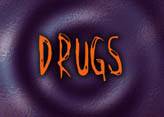- Navigating Your Midlife Crisis: Embracing New Possibilities
- City Raccoons Showing Signs of Domestication
- Mapping the Exposome: Science Broadens Focus to Environmental Disease Triggers
- One Week Less on Social Media Linked to Better Mental Health
- Your Brain Changes in Stages as You Age, Study Finds
- Some Suicide Victims Show No Typical Warning Signs, Study Finds
- ByHeart Formula Faces Lawsuits After Babies Sickened With Botulism
- Switch to Vegan Diet Could Cut Your Greenhouse Gas Emissions in Half
- Regular Bedtime Does Wonders for Blood Pressure
- Dining Alone Could Mean Worse Nutrition for Seniors
Wider Use of Naloxone Could Cut Deaths From Drug Overdoses: CDC


Allowing more emergency medical service (EMS) workers to administer the prescription drug naloxone could reduce the number of overdose deaths caused by opioid drugs, U.S. health officials said Friday.
Opioids include powerful prescription narcotic painkillers such as Vicodin, OxyContin, Percocet and codeine as well as heroin. Prescription opioids caused more than 16,000 deaths in the United States in 2013, while heroin caused more than 8,000 deaths, the officials said.
Naloxone is a prescription drug that can be lifesaving if given in time to people who have overdosed on prescription opioids or heroin.
U.S. Centers for Disease Control and Prevention researchers reviewed nationwide data from 2012 and found that advanced EMS staffers were more likely than basic EMS staffers to administer naloxone. One of the big reasons: as of 2014, only 12 states allowed basic EMS staffers to administer naloxone for a suspected opioid overdose, but all 50 states allowed advanced EMS staffers to do so, the CDC researchers noted.
They recommend expanding training on the administration of naloxone to all emergency service staffers, and helping basic EMS personnel meet the advanced certification requirements.
“Naloxone can be given nasally to a person suspected of overdose, allowing basic EMS staff to administer the drug without injection,” CDC senior health scientist Mark Faul said in an agency news release.
“Naloxone is nonaddictive, and expanding training on how to administer the drug can help basic emergency medical service staff reverse an opioid overdose and save more lives,” he added.
The CDC study found that naloxone was most likely to be given to women, patients ages 20 to 29, and suburban residents. In general, the opioid overdose death rate was 45 percent higher in rural areas than in urban areas, but the use of naloxone by rural EMS staffers was only 22.5 percent higher than among urban EMS staffers, the researchers said.
“Opioid overdose deaths are devastating families and communities, especially in rural areas,” CDC Director Dr. Tom Frieden said in the news release.
“Many of these deaths can be prevented by improving prescribing practices to prevent opioid addiction, expanding the use of medication-assisted treatment, and increasing use of naloxone for suspected overdoses. Having trained EMS staff to administer naloxone in rural areas will save lives,” he said.
The study was published in the American Journal of Public Health.
More information
The U.S. National Institute on Drug Abuse has more about opioids.
Source: HealthDay
Copyright © 2025 HealthDay. All rights reserved.










